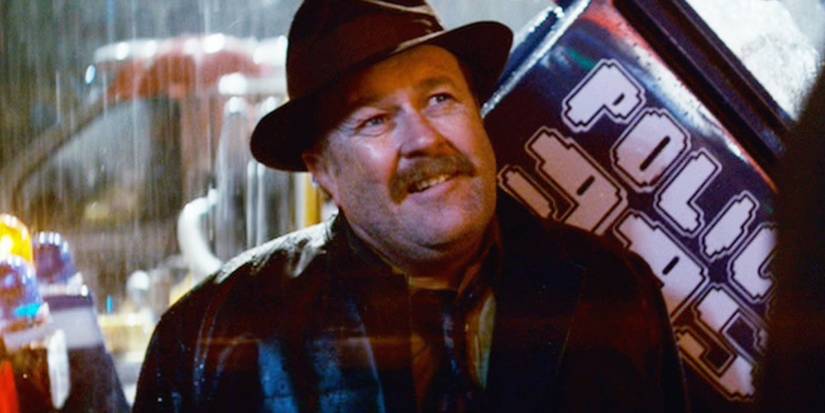
While many sci-fi stories, like Terminator and The Matrix, explore the idea of artificial intelligence rebelling against humans, Battlestar Galactica and Blade Runner share a striking number of similarities – and their connection may be more profound than it appears.
Both stories explore a world where artificial beings are fully integrated into society, and they avoid simple portrayals of humans as good and robots as evil. Instead, they show artificial characters as complex individuals with deep emotions and motivations beyond just taking over the world. A closer look suggests these two sci-fi worlds might actually be connected, with the events of Battlestar Galactica potentially leading directly into the world of Blade Runner.
Bryant’s “Skinjob” Remark Links Blade Runner To Battlestar Galactica

A clear connection between Battlestar Galactica and Blade Runner appears through the character of Bryant, Deckard’s harsh boss. Bryant uses the derogatory term “skinjobs” to refer to the replicants Deckard is hunting – a label for the human-like robots in Blade Runner. Interestingly, the word “skinjob” is also commonly used in the Battlestar Galactica series, where humans use it as an insult towards the humanoid Cylon robots.
It’s likely Battlestar Galactica used phrases from Blade Runner as a tribute to Edward James Olmos, who acted in both. Interestingly, this shared language also fits within the story’s world itself.
Since Battlestar Galactica is set far in the past, some aspects of its culture would naturally influence things we see in the 21st century. For example, Bob Dylan’s song “All Along the Watchtower” appears in the show, but it’s also possible that the English language itself, along with ideas like marriage and boxing, originated in the Twelve Colonies. And it’s likely that the swear word “frak” eventually turned into “fk” over time.
It’s quite possible the term “skinjob” is a deeply ingrained memory passed down through the Galactica crew, reappearing thousands of years later when humans on Earth begin to create artificial intelligence.
Blade Runner Is Just Another Cycle In Battlestar Galactica’s Pattern

A central idea in Battlestar Galactica is that history repeats itself – everything that happened before will happen again. The show portrays events as part of an endless cycle: a civilization creates artificial life, that life destroys them, and the remaining survivors must rebuild. Throughout the series, powerful, almost god-like beings attempt to guide both humans and their robotic creations, the Cylons, to avoid repeating past errors, but the show’s conclusion implies these efforts aren’t fully successful.
It’s possible that Blade Runner is a later installment in the same ongoing story as Battlestar Galactica. The robotic Cylons from Battlestar are essentially the same as the “replicants” in Blade Runner, and Eldon Tyrell, who created the replicants, fills a similar role to Daniel Graystone, the creator of the Cylons. The early signs of a replicant rebellion in Blade Runner imply that this period is nearing a point where humanity’s destruction becomes inevitable.
The idea of artificial beings being able to reproduce appears in both Blade Runner 2049 and Battlestar Galactica. This similarity strengthens the idea that Blade Runner might be part of a repeating pattern of events.
The biggest problem with connecting these two stories is the timeline. Blade Runner is set in 2019, a future with advanced technology like flying cars and genetic engineering. Battlestar Galactica jumps ahead to 2009, but that’s not enough time for the world to evolve into the one shown in Blade Runner. The easy fix is to imagine Blade Runner happening even further in the future, after the cycle shown in Battlestar Galactica has already run its course.
Why Blade Runner’s Gaff Looks Like Battlestar Galactica’s William Adama

Both the characters Gaff from Blade Runner and William Adama from Battlestar Galactica – both played by Edward James Olmos – share a striking resemblance and surprisingly similar beliefs. Adama commands the last of humanity against the Cylons, while Gaff is a police officer hunting replicants. Interestingly, both characters demonstrate a degree of understanding and even sympathy towards their enemies: Adama eventually learns to work with the Cylons, and Gaff shows mercy by allowing Rachael to live at the end of Blade Runner.
One possibility is that Gaff is a distant descendant of Adama, perhaps thousands of years in the future. However, a more compelling idea is that Gaff is actually a replicant created using Adama’s genetic material.
The idea that Gaff is a replicant has stuck around, even apart from any connection to Battlestar Galactica, because his reasons for acting are mysterious and he seems to understand people very well. Considering that Battlestar Galactica showed Cylons being created from human templates, it’s possible Gaff was intentionally designed as a tribute to William Adama, honoring his ability to foster understanding even with his adversaries.
With Saul Tigh still alive on Earth at the end of Battlestar Galactica, and being a Cylon with the potential for a long life, a fascinating possibility emerges. Considering his wife was a key Cylon scientist on the original Earth, it’s conceivable that by the time of Blade Runner, Saul might create a Cylon as a memorial to his friend Adama. This new Cylon, like Adama, could be programmed to recognize the shared traits between humans and replicants, focusing on connection rather than division.
Read More
- FTN/USD
- Золото прогноз
- Прогноз криптовалюты CRV: прогнозы цены CRV
- Прогноз криптовалюты USD1: прогнозы цены USD1
- Прогноз нефти
- Доллар обгонит бразильский реал? Эксперты раскрыли неожиданный сценарий
- Йена обгонит южнокорейскую вону? Эксперты раскрыли неожиданный сценарий
- Positive Technologies акции прогноз. Цена акций POSI
- Прогноз криптовалюты IP: прогнозы цены IP
- Disney Announces Hulu Phaseout Window
2025-11-28 17:10